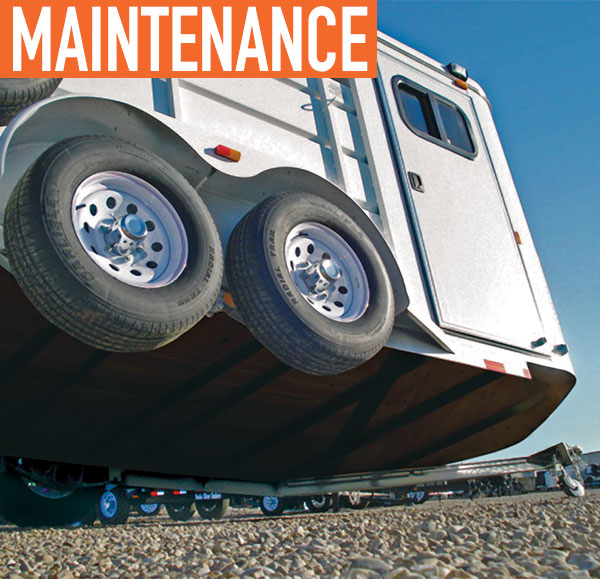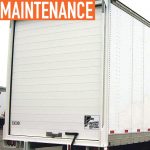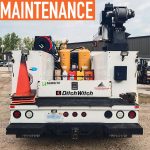Trucks on the road—from light pickups to Class 8 monsters—require maintenance, including everything from oil changes to replacing worn parts. Smart truck owners also make corrosion prevention a high priority in their routine. It’s a sensible precaution: unchecked galvanic corrosion can compromise truck components, erode them, and create safety hazards. Repair or replacement costs and unexpected downtime lead to decreasing business productivity and profits.
Galvanic corrosion has always been an issue for the work truck industry. American businesses annually spend $276 billion repairing damage caused by corrosion. Of that, $50 billion is spent by the transportation industry on vehicle repair/replacement and infrastructure, according to the Federal Highway Administration. Clearly, fighting corrosion effectively can be a major source of savings for companies that depend on trucks.
“Corrosion is one of the biggest concerns our commercial customers have,” says Scott Colvin, PPG brand manager, commercial transport. “They know what it can do to their vehicles. It’s unsightly, destructive, and can take a truck off the road.”
GALVANIC CORROSION
NASA defines galvanic corrosion as “an electrochemical action of two dissimilar metals in the presence of an electrolyte and an electron conductive path.” When two different metals are in contact, the more noble metal (cathode) decreases its corrosion potential at the expense of the more active metal (anode). Basically, the corrosion of one metal is decreased while the adjoining one is accelerated. The electrolyte (water or road salt, for example) acts as the conductor of the potential change. Instances of galvanic corrosion—usually in the form of rust—are easy to find. Wherever two different metals meet, there is usually a buildup of corrosion, often where engineers want it least: welds, seams, hinges, and fasteners.
WHY IT HAPPENS
For galvanic corrosion to take place, the following three conditions must exist. Eliminate one and you eliminate corrosion.
- Dissimilar metals
Every metal has corrosion potential, referred to as its anodic index. The farther apart two metals are in this rating, the stronger the rate of galvanic corrosion. - Metal-to-metal contact
Two different metals must be in contact with each other for corrosion to transfer from the cathode to the anode. In the trucking industry, different metals are adjoined on hinges, steps, doorframes, mounting brackets, and fasteners. - Exposure to an electrolyte
As noted, an electrolyte is an electrically conductive substance that transfers corrosion from the more resistant metal to the weaker one. The most destructive electrolytes are road deicers. Road salts accelerate corrosion because they are excellent conductors and attack truck undercarriages and bodies. These include:
◊ Sodium chloride—solid when spread on ice and snow, it dissolves into a liquid on the road.
◊ Calcium chloride—also solid at room temperature, it works more effectively in lower temperatures than sodium chloride.
◊ Magnesium chloride—applied as a liquid deicer on roads, it’s more corrosive because of its acidic nature and more active in the presence of atmospheric humidity, not just water.

Although most road salts are solids, as they liquefy they can be drawn upward with moisture into a vehicle. That’s why truck owners should consider protecting parts higher up on a vehicle and not just those near the ground. Exposed body sheet metal with chips, scratches, and collision damage is more vulnerable to the elements and corrosion. Acid rain and salty sea air also pose problems.
FIGHT IT
Prevention is key. Corrosion can be slow to develop or begin in a hidden spot. A problem may not be noticeable until it’s staring you in the face. And then, it won’t be pretty.
“The best thing is to keep rust from forming because corrosion damage can’t be reversed,” Colvin says. “You want to place a protective barrier between the truck’s metal and corrosion-causing elements. There are ways to do that. In fact, corrosion protection is an essential objective of any effective commercial coatings system.”
While modern manufacturing makes it impractical or impossible to not use different metals, the other two corrosion conditions can be reduced.
- Eliminate or insulate metal-to-metal contact
This can be done using a liquid barrier product or a solid barrier—polyethylene tape, synthetic fasteners, nylon washers, and other inserts—as an insulator. - Prevent electrolytes from coming into contact with metals
Creating a protective barrier between metals and electrolytes prevents or slows corrosion. Zinc- rich primers offer the ultimate in protection. Additionally, topcoats help keep the primer and undercoats safe from damage while providing visual appeal.
CRITICAL PROTECTION
Primers act as cost-effective barriers between substrate metals and electrolytes. (Primers also provide resistance against rock chipping along with other important durability and appearance qualities.) A variety of primer options is available, and the chemistry of each affects its anticorrosion strength. If preventing and fighting corrosion is the highest priority, zinc-rich epoxies provide premium protection as part of a three-coat system that includes epoxy or urethane primers and topcoats. Epoxy primers offer adhesion and corrosion properties that frequently make them the best option for the mid-coat application in a three-coat system. Polyurethane primers are used in some applications for fast cure speed and smooth appearance.
Primer choice can be influenced by several factors—climate, humidity, rain, snow, and expected service life. There is usually a strong cost/performance trade-off with primers, so coatings manufacturers recommend selecting by performance expectations since performance is so important to equipment longevity. Topcoats are generally associated with appearance characteristics—color, gloss, vibrancy, but they play a vital role in corrosion protection by shielding primers and undercoats from deterioration. Topcoats slow the effects of water and road salts, serving as the first line of corrosion defense.
“Technologies are always advancing,” Colvin adds. “At PPG we have new DTM topcoats that provide protection with just one layer and robust universal primers that are appropriate for multiple substrates—steel, aluminum, stainless steel.”
GUARD UP
It’s important to identify corrosion problems early. Indicators include paint blistering, surface roughening, cracking, lifting, and peeling of the finish surface. Colvin recommends a comprehensive approach that covers nearly the entire vehicle with a variety of coatings. He points to PPG’s line of innovative commercial coatings products as an example of technologies formulated for enhanced corrosion protection and improved resistance to chemicals. These include pretreatment chemicals as well as epoxy and urethane primers.
“These coatings fight corrosion on all surfaces and keep vehicles at their best,” Colvin says. “This isn’t a one-size-fits-all proposition: Individual trucks and fleets have differing requirements. The best way to determine what you need is to talk to your coating representative and ask for a corrosion audit. We offer that at PPG to help find your most cost-effective solution.”
There is one additional recommendation Colvin offers: Wash your truck. Frequent washing, including high-pressure spraying of the undercarriage, helps remove salt and dirt, reducing chances of corrosion. Without washing, the best protective measures can be compromised.
While there is no single solution for galvanic corrosion, if a truck owner wants to fight it, there are effective ways to do it. Anticorrosion coatings aren’t an expense; they’re an investment in your business. Your coatings representative can help you determine what’s best for your situation.
FOR MORE INFORMATION
Find out more about PPG corrosion protection, visit www.ppgcommercialcoatings.com. Eli Greenbaum is an automotive writer based in Metro Detroit. Reach him at eli@group-ex.com.
MODERN WORKTRUCK SOLUTIONS: NOVEMBER 2018 ISSUE
Did you enjoy this article?
Subscribe to the FREE Digital Edition of Modern WorkTruck Solutions magazine.
![]()






